On this page
NunavutThis page lists books about birds and birdwatching in the Canadian territory of Nunavut.The books are arranged by publication date with the most recent at the top of the page.
CanadaFor bird books that cover all, or a large part, of Canada see the following pages:
Canada
North America
|
|
|
|
Common Birds of NunavutMark L. Mallory
Inhabit Media
2014
"Readers will discover the vibrant natural life of Nunavut with this richly visual guide to the diverse bird populations of the Arctic. This book pairs beautiful photographs with detailed information on more than 50 species, providing information on the appearances, traditional uses, and behaviors of Arctic birds. Alongside such scientific information, the inclusion of Inuit traditional knowledge about uses for bird feathers, down, and eggs makes this Arctic avian guide a unique and valuable reference."
|
Buy from amazon.co.uk 
|
|
Birds of Western CanadaEditor: David M. Bird
Dorling Kindersley
2013
"Ideal for Canadian birdwatchers and bird lovers of every age! Each of these regional field guides are filled with page after page of magnificent close-up photographs and helpful full-page profiles of hundreds of commonly seen species. With an East / West division made at the 100th meridian (approximately Winnipeg) these handy books offer scientifically accurate and readable accounts of notable characteristics and information everything from behavior and habitat to nest construction and conservation status. Each profile also features diagrams of flight patterns and statistics of size, wingspan and lifespan. These invaluable reference guides are both detailed and accessible, with a user-friendly format that will make it easy for birders to enjoy either studying one species account at a time or browsing to make cross comparisons."
|
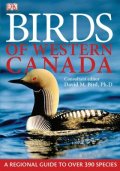 |
|
Important Areas for Birds in Nunavut
Canadian Wildlife Service, Environment Canada
2012
"Compilation of: Migratory Bird Sanctuaries (MBSs); National Wildlife Areas (NWAs); Key Terrestrial Habitat Sites; Key Marine Habitat Sites; Important Bird Areas (IBAs); RAMSAR Wetlands; and newly identified
important areas."
|
 |
|
Arctic Shorebirds in North AmericaEditors: Jonathan Robert Bart and Victoria Helen Johnston
Studies In Avian Biology 44
Cooper Ornithological Society
2012
"Each year shorebirds from North and South America migrate thousands of miles to spend the summer in the Arctic. There they feed in shoreline marshes and estuaries along some of the most productive and pristine coasts anywhere. With so much available food they are able to reproduce almost explosively; and as winter approaches, they retreat south along with their offspring, to return to the Arctic the following spring. This remarkable pattern of movement and activity has been the object of intensive study by an international team of ornithologists who have spent a decade counting, surveying, and observing these shorebirds. In this important synthetic work, they address multiple questions about these migratory bird populations. How many birds occupy Arctic ecosystems each summer? How long do visiting shorebirds linger before heading south? How fecund are these birds? Where exactly do they migrate and where exactly do they return? Are their populations growing or shrinking? The results of this study are crucial for better understanding how environmental policies will influence Arctic habitats as well as the far-ranging winter habitats used by migratory shorebirds."
|
Buy from amazon.co.uk 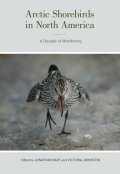
|
|
The Arctic: A Guide To Coastal WildlifeTony Soper
Bradt Wildlife Guides
Bradt
3rd edition
2012
"An engaging and beautifully illustrated guide to some of the most exciting wildlife in the world. This enchanting guide to the birds, animals and marine life of the Arctic Ocean and its polar fringes, is a fascinating and informative read. Visitors to the region can cruise the arctic coast in the company of blue whales and belugas, observe polar bears pursuing barnacle geese and seals, and experience a host of shorebirds and wildfowl gorging on the abundant food. Tony Soper's expert knowledge is richly supplemented with full-colour illustrations by award-winning wildlife artist Dan Powell. This revised edition includes a new section covering the distinct flora and fauna of the Bering Sea, an area about to see a significant increase in visitor numbers as a direct result of changes in the ice cover of the Arctic Ocean."
|
Buy from amazon.co.uk 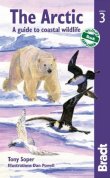
|
|
Boreal Birds of North America: A Hemispheric View of Their Conservation Links and SignificanceEditors: Jeffrey V. Wells
Studies In Avian Biology 41
Cooper Ornithological Society
2011
"Reaching from interior Alaska across Canada to Labrador and Newfoundland, North America's boreal forest is the largest wilderness area left on the planet. It is critical habitat for billions of birds; more than 300 species regularly breed there. After the breeding season, many boreal birds migrate to seasonal habitats across the United States, Mexico, the Caribbean, and Central and South America. This volume brings together new research on boreal bird biology and conservation. It highlights the importance of the region to the global avifauna and to the connectivity between the boreal forest and ecoregions throughout the Americas. The contributions showcase a unique set of perspectives on the migration, wintering ecology, and conservation of bird communities that are tied to the boreal forest in ways that may not have been previously considered."
|
Buy from amazon.co.uk 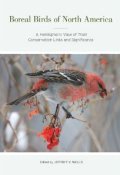
|
|
The Birds of Prince Charles Island and Air Force Island, Foxe Basin, NunavutVictoria H. Johnston and Stephen T. Pepper
Canadian Wildlife Service, Environment Canada
2009
"We studied the populations of birds breeding on Prince Charles Island and Air Force Island, Foxe Basin, Nunavut, to determine whether the islands should be protected as a National Wildlife Area. In 1996 and 1997, we classified the habitats found on the islands and we determined the numbers and breeding status of birds on 85 survey plots on the islands. Shorebird species diversity and densities were compared to results from published studies carried out elsewhere in the Arctic and to results of shorebird surveys carried out on Prince Charles Island 8 years previously. We also did aerial surveys on both islands to look for waterfowl and Sabine's Gulls Xema sabini, and we compared those results with information collected from aerial surveys 12 years previously."
|
 |
|
Key Migratory Bird Terrestrial Habitat Sites In The Northwest Territories And NunavutP.B. Latour, J. Leger, J.E. Hines, M.L. Mallory, D.L. Mulders, H.G. Gilchrist, P.A. Smith, D.L. Dickson
Occasional Paper Number 114
Canadian Wildlife Service
2008
"This report identifies 83 key terrestrial habitat sites for migratory birds in the Northwest Territories and Nunavut. These sites support at least 1% of the Canadian population of at least one migratory bird species (or, in some cases, subspecies). Sites also include marine and freshwater habitats where the value of the terrestrial habitat is intimately linked to the presence of aquatic habitats. Data for the identification of sites were drawn from existing published and unpublished reports and personal communications."
|
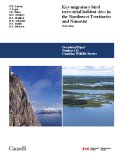 |
|
Boreal Forest of Canada and RussiaW.O. Pruitt and L.M. Baskin
Pensoft
2004
Bilingual parallel text: Russian and English
"Our planet's green halo is the circumpolar taiga or boreal forest. This forest is remarkably uniform in its climate, vegetation types and animal types. All life forms here have evolved adaptations to the long, cold and snowy winters, the short, hot and dry summers and the swiftly-changing seasons. The same genera and families of birds and mammals occur in this forest type in Eurasia and North America. Humans have invaded and exploited these northern coniferous forests differently in Canada and Russia. Although the history of human use has been different between the two countries the end results in both frequently have been catastrophic for vegetation, animals and some human groups. Such similarities and differences have been studied by biologists, human ecologists, anthropologists and other scientists at two research and teaching field stations in the taiga."
|
Buy from amazon.co.uk 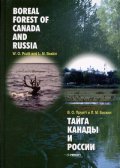
|
|
Key Marine Habitat Sites for Migratory Birds in Nunavut and the Northwest TerritoriesMark L. Mallory and Alain J. Fontaine
Occasional Paper Number 109
Canadian Wildlife Service
2004
"The Canadian Arctic contains much of Canada's coastal and marine zones, and these areas support tremendous numbers of marine birds. At the start of the 21st century, the Canadian marine zone is the subject of much concern as a result of a variety of anthropogenic threats. The Canadian Wildlife Service (CWS)is the federal agency responsible for the conservation of migratory bird populations and their habitats in Canada. As part of its mandate, CWS has produced this report identifying key marine habitat sites for migratory birds in Nunavut and the Northwest Territories. This report serves as a statement of CWS interest in marine areas where special wildlife conservation measures may be required, and it is offered as a guide to the conservation efforts of other agencies with interests in Nunavut and the Northwest Territories."
|
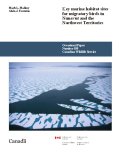 |
|
Canada's Boreal ForestJ. David Henry
Smithsonian Institution Scholarly Press
2002
"In Canada alone, the boreal forest (also called the taiga) covers more that 1.5 million square miles, fully one-third of the country and 20 percent of the entire North American continent. Terminating to the north with the treeless tundra, this region is inhabited and utilized by indigenous people and is home to unique populations of plants and animals found nowhere else on the planet. J. David Henry challenges the perception of the boreal forest as an "economic wasteland" by explaining how economically and ecologically valuable it is. He begins by answering some common questions about the region and explains its intricate geology. An in-depth examination follows of three factors that play an enormous role in shaping the complex life of the boreal forest: snow, forest fires, and peatlands. Henry looks at the dynamics of the region's vegetation and the evolution of its animals, and discusses the fascinating ten-year predator-prey cycle of snowshoe hares and Canadian lynx, one of the most famous examples of ecological interconnection. In Canada's boreal forest, loggers have clear cut an area the size of Great Britain. The final portion of the book examines initiatives from Scandinavia and Finland in order to offer alternatives to large-scale logging and mining, suggesting how humans can live and work in the boreal forest in a sustainable and responsible manner."
|
Buy from amazon.co.uk 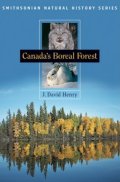
|
|
Coastal Survey of Eiders and Other Marine Birds Along the Hall Peninsula, Southeast Baffin Island, NunavutA. J. Fontaine et al
Canadian Wildlife Service, Environment Canada
2001
|
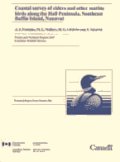 |
|
Assessment of Bird Populations in the Rasmussen Lowlands, NunavutVictoria H. Johnston, Cheri L. Gratto-Trevor and Stephen T. Pepper
Canadian Wildlife Service, Environment Canada
2000
"We undertook a study of the breeding bird populations in the Rasmussen Lowlands, Nunavut, in order to assess the area's appropriateness for status as a National Wildlife Area. In 1994 and 1995, we determined habitat types and numbers and breeding status of birds in 118 plots in the lowlands. Shorebird species richness and densities were compared to results from published studies carried out elsewhere in the Arctic. We recorded 35 bird species including 22 confirmed breeding species during surveys. Of 12 shorebird species recorded, Red Phalaropes Phalaropus fulicaria, Pectoral Sandpipers Calidris melanotos, and White-rumped Sandpipers Calidris fuscicollis were most common. Other confirmed breeders were Semipalmated Sandpipers Calidris pusilla, American Golden Plovers Pluvialis dominica, Dunlin Calidris alpina, Black-bellied Plovers Pluvialis squatarola, Baird's Sandpipers Calidris bairdii, Stilt Sandpipers Micropalama himantopus, and Semipalmated Plovers Charadrius semipalmatus. Breeding was probable but not confirmed for Buff-Breasted Sandpipers Tryngites subruficollis and not suspected for Ruddy Turnstones Arenaria interpres."
|
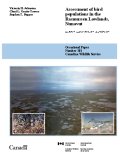 |
|
In Search of Arctic BirdsRichard Vaughan
Illustrations: Gunnar Brusewitz
Poyser
1991
The introduction of this book gives an overview of the Arctic and the forces that shape its bird populations and their biology. This is followed by chapters on the Innuit people, the whaling and discovery ships and the famous ornithologists who have investigated the area. Particular birds discussed in detail include the Gyrfalcon, Knots, Ross's Gull, geese, divers and Snowy Owls. The book also provides practical advice on visiting the Arctic.
|
Buy from amazon.co.uk 
|
|